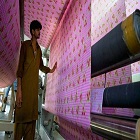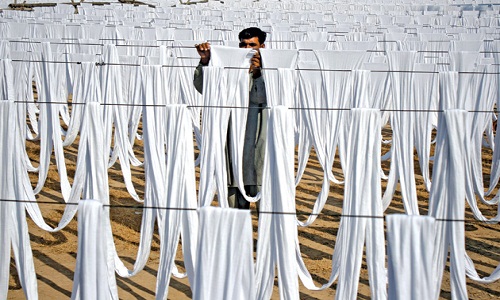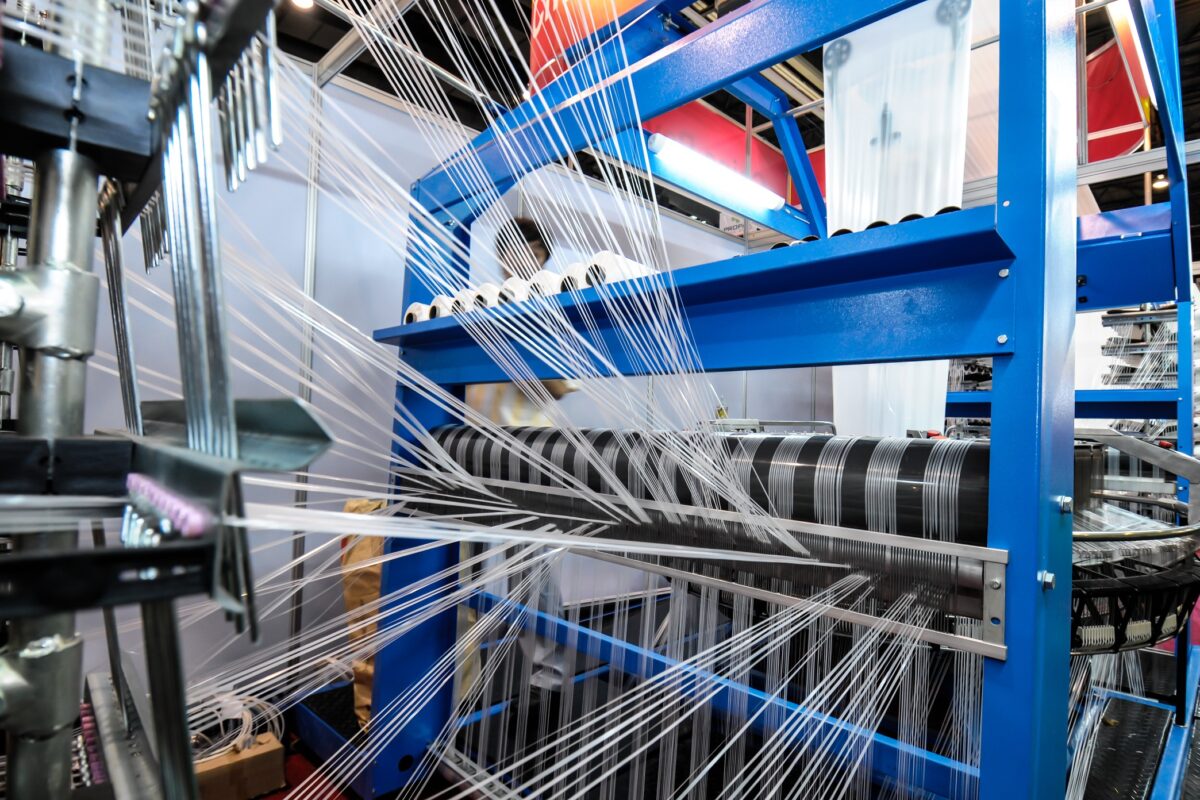"Digital textile printing market in Pakistan has shown good promise as it offers better and high definition textile print design possibilities, lower water, effluent, emissions and energy use with economical production of ‘short run-medium run’ prints to the market. Shorter delivery brings in increased savings to retailers and brands as digital printing hubs are based on proximity sourcing and just-in-time printing and sourcing strategies"

Digital textile printing market in Pakistan has shown good promise as it offers better and high definition textile print design possibilities, lower water, effluent, emissions and energy use with economical production of ‘short run-medium run’ prints to the market. Shorter delivery brings in increased savings to retailers and brands as digital printing hubs are based on proximity sourcing and just-in-time printing and sourcing strategies.
Textiles maintains a strong growth story
Pakistan’s textile sector plays a pivotal role in the country’s economy. At present, independent processing units are working in and around Faisalabad, Gujranwala and Karachi with complete finishing facilities. These integrated units have complete finishing facilities which include bleaching, mercerising, dyeing, calendaring and printing. These units from the power loom sector procure cloth and after processing are marketed under their own brand names in the domestic market.

Weaving and made-ups have three different subsectors viz. integrated, independent weaving units and power loom sector. Cloth is being produced in both mill and non-mill sectors. Pakistan’s fabric range from coarse to super varieties. There are a large number of vertically integrated units, where production is controlled from fiber to the end product, and marketed abroad directly.
The production of cloth (mill sector) increased from 1,020 million square meters in 2010-11 to 1,037 million square meters in 2014-15, thus showing an average increase of 0.54 per cent per annum. Out of total production of cloth during 2014-15 in mill sector, 50 per cent produced in grey form, 34 per cent dyed and printed, and 16 per cent blended and bleached.
In order to help the value-added sectors of textile industry the government has taken a number of measures. One of these is to correct the imbalance caused by dependence of the entire country’s economy on a single commodity that is raw cotton. Serious efforts have been made by the industry to increase substantially, the domestic production of polyester fiber, whose supplies can be technically pre-determined and controlled by man as against raw cotton, being always on the mercy of nature. Consequently, there is a growing trend for blended fabrics, especially polyester/cotton in garments and other made-ups, like bed sheets.
Increase in import of finishing machines
Fashion has always been a fast-paced industry, but today top brands are incorporating new colours and styles onto their shop floors at unprecedented speeds. Household and other textile applications are also beginning to experience similar pressure to provide more designs at a faster pace. The success of garment printing illustrates the growth of an industry that equipment manufacturers have clearly noticed.
Meanwhile, a number of printing companies have released DTG printers, Epson’s Sure Colour F2000 series among them. Garment printing uses GT-3 Series Garment Printer with CMYK and 4 White Print Heads made by Brother. Due to withdrawal of custom duties and taxes and introduction of concessional financing and LTFF on the import of finishing textile machinery increased during the year 2014-15. Import of textile dyeing, drying, bleaching and finishing machines increased from 782 numbers valued Rs 1.34 billion in 2012-13 to 2,220 numbers valued Rs 3.35 billion in 2014-15, thus showing an average increase of 50 per cent in terms of value.
Innovations resulting from technological advancements represent the best strategy for success in the increasingly competitive textile industry. The fabric production market has limited scope, which can be enhancing by value added finishing to textiles. The maintenance and improvement of current properties and the creation of new material properties are the most important reasons for the value added textiles.
Challenges ahead
Pakistan textile industry is facing challenges due to social and environmental compliance issues from US and European buyers at present. The impact of environmental regulations on Pakistan’s textile sector can be classified according to many parameters. However, the major area of concern for the textile-processing sector is wastewater and effluent treatment.
The country’s textile industry is burdened by high cost of inputs and many taxes. Electricity rates have been raised by 13.6 per cent that makes the textile products completely uncompetitive in the international markets. Frequent power outages and fluctuations cause havoc with the production.
According to APTMA, billions of rupees of the textile industry are stuck up with the government for a long period due to the overdue refunds of sales tax, income tax, and duty-drawback. Despite repeated representations at all levels, overdue refunds have not been released. This has raised the cost of production for the Pakistani manufacturers in relation to its other world competitors and forced the industry to borrow to continue and survive.
Pakistan government announced Textile Policy (2014-19) in February 2015 envisaging doubling of textile exports from $13 billion to $26 billion in the next five years. Besides opening up EXIM bank, reconstitution of export development fund board, setting up of land port authority and Federal Textile Board.












